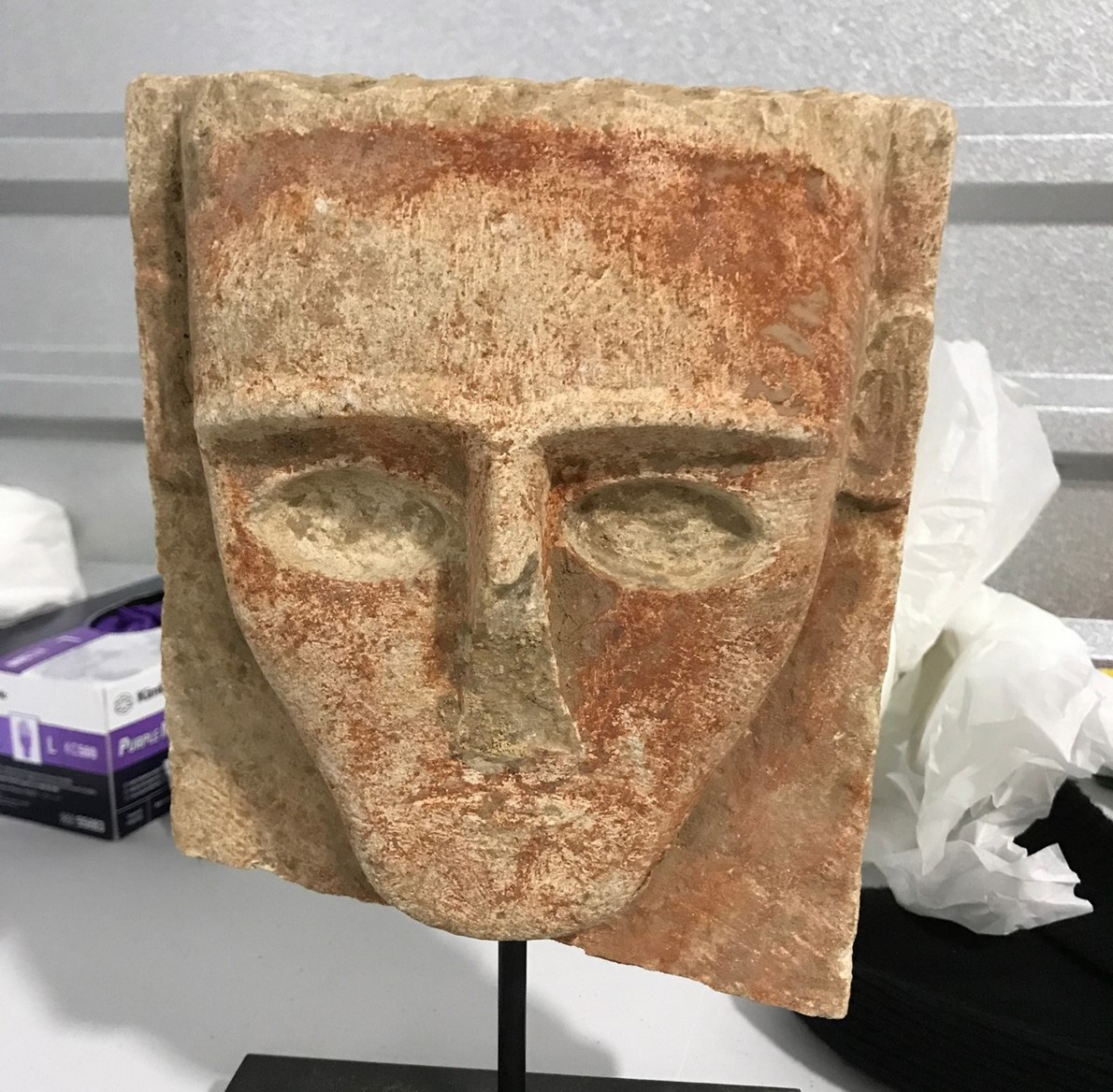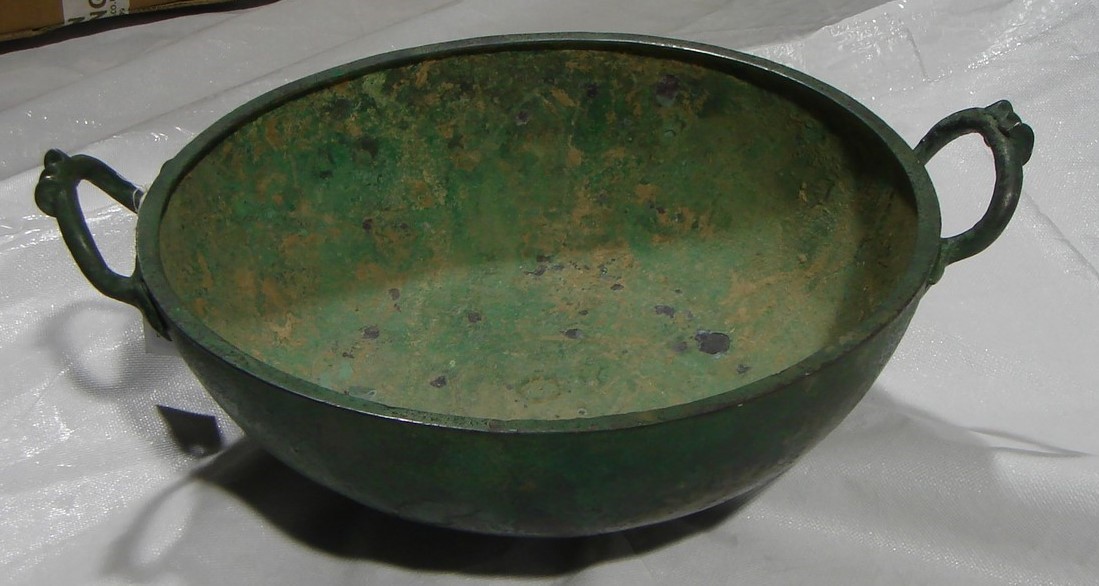As the pressure on museums and
collectors to return looted artifacts to their countries of origin has grown in
recent years, one issue has been whether some countries are equipped to accept
them immediately.
اضافة اعلان
On Tuesday, under an agreement designed to
recognize such a difficulty, the Smithsonian Institution announced that the US
is returning 77 looted artifacts to the government of the Republic of Yemen,
but their physical return will be delayed during the current violent conflict
there.
For the next two years at least, the
objects will be housed at the Smithsonian’s National Museum of Asian Art in
Washington, where some may be put on display.
The artifacts include 65 funerary stelae,
or carved stones, from northwest Yemen, dated to the second half of the first
millennium BC, a bronze bowl, and 11 folios from early Qurans.
They were seized from a New York art dealer
more than a decade ago. Since then, they have been held in storage, and the new
partnership, the first return of cultural objects by the US government to Yemen
in almost 20 years, means some could soon emerge from the darkness of storage
and be exhibited.
“With the current situation in Yemen, it is not the right time to bring the objects back into the country,” Mohammed Al-Hadhrami, Yemen’s ambassador to the US, said in a statement.
“The current situation in Yemen is tragic,”
Chase F. Robinson, director of the museum of Asian Art, said in an interview.
“This is just a small moment in which we can celebrate some collaboration.”
‘Not the right time’ for repatriationYemen is trying to emerge from an
eight-year civil conflict between the government, backed by Saudi Arabia, and a
well-armed rebel group called the Houthis. The United Nations estimates that
the war has claimed more than 200,000 lives, mostly from indirect causes like
hunger and disease.
As well as creating a refugee and
humanitarian crisis, the war has left much of the nation’s infrastructure in
ruins. According to the National Museum of Asian Art, the country “has
experienced heavy looting and destruction of its tangible cultural heritage”.
 An
ancient funerary stela, or marker, was one of the 77 looted artifacts formally
returned to Yemen by US officials on February 21, 2023.
An
ancient funerary stela, or marker, was one of the 77 looted artifacts formally
returned to Yemen by US officials on February 21, 2023.
The objects were turned over to the custody
of the National Museum of Asian Art on Tuesday afternoon during a ceremony at
the Embassy of the Republic of Yemen in Washington, with officials from the US
departments of Homeland Security, State, and Justice.
“This partnership with Yemen will serve as an exemplary model of how US museums can work with other countries to steward and share cultural objects with broad audiences.”
“With the current situation in Yemen, it is
not the right time to bring the objects back into the country,” Mohammed
Al-Hadhrami, Yemen’s ambassador to the US, said in a statement.
According to the initial two-year custodial
agreement, which Yemen can request to extend, the museum will store, document,
and care for the objects and will be able to “exhibit the collection to foster
a greater understanding of ancient Yemeni art”, the museum said in its
announcement.
Spearheading ethical returnsAs museums have increasingly embraced the
repatriation of objects stolen from other countries or acquired under disputed
circumstances, the Smithsonian has sought to be a prominent voice in the debate
about how and when objects should be returned.
Lonnie G. Bunch III, the secretary of the
Smithsonian, has said he wants the institution’s museums to update their
collections practices, and last year adopted an ethical returns policy that
holds that issues of fairness could trump any legal title to objects it might
possess.
Following that announcement, it said that
it would return 29 Benin Bronzes from its own collections to Nigeria, though
nine remained on loan at the Smithsonian.
Because of the civil war in Yemen, and
concerns about the looting it fostered, US officials have been pushing urgently
to seize any items from that country that are found to have entered the US
illegally.
‘Steward and share’The Metropolitan Museum of Art has also
entered into a loan agreement that returns ownership of artifacts to the
country of origin but permits their continued display by the institution. In
the case of the Met, it has an arrangement with the Greek government to exhibit
one of the world’s most significant privately assembled collections of Cycladic
antiquities, with an acknowledgment that it belongs to the Greek state.
A small number of the repatriated objects could join a current exhibition, “Ancient Yemen: Incense, Art, and Trade”, where they could be used to tell the story of Yemen, the destruction of its cultural heritage, and the successful return of smuggled items.
The Smithsonian’s partnership with Yemen is
the latest example of cooperation between an American museum and a country of
origin. “This partnership with Yemen will serve as an exemplary model of how US
museums can work with other countries to steward and share cultural objects
with broad audiences,” the National Museum of Asian Art said.
Robinson said it ensures the present
safeguarding of precious artifacts from Yemen’s antiquity, but also means they
will be returned when Yemen determines the objects will be safe.
 An
inscribed bronze bowl believed to date from the 3rd century AD.
An
inscribed bronze bowl believed to date from the 3rd century AD.
He said a small number of the repatriated
objects could join a current exhibition, “Ancient Yemen: Incense, Art, and
Trade”, where they could be used to tell the story of Yemen, the destruction of
its cultural heritage, and the successful return of smuggled items.
Smuggling operationAccording to court documents, the Yemeni
objects were smuggled into the US in 2008 and 2009 by Mousa Khouli of Brooklyn,
also known as Morris Khouli, who sold ancient coins and artifacts from a
now-defunct Manhattan gallery, Windsor Antiquities.
In 2012, Khouli pleaded guilty to smuggling
and making false statements and was sentenced to a year of probation, six
months’ home confinement and 200 hours of community service. He also agreed to
forfeit any claims to the seized objects.
Investigators said he shipped the 65 carved
funerary stones, weighing about 1,000 pounds, via the United Arab Emirates, by
labeling them as “decorative stone carved heads” from India and valuing them at
$75 apiece.
Investigators said he later tried to sell
two of the stones as “limestone carvings” from Yemen and Saudi Arabia, one for
$700 and the other for $2,000.
Read more Odd and Bizarre
Jordan News



